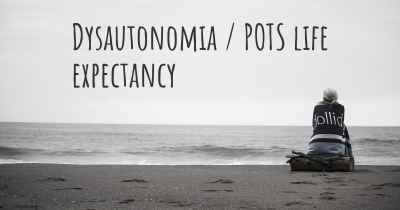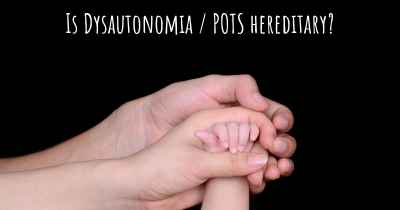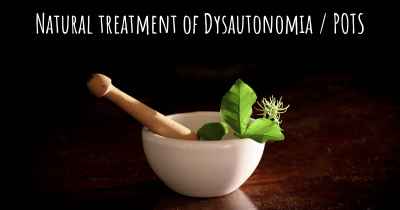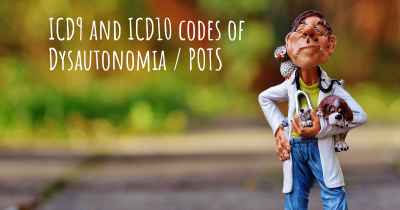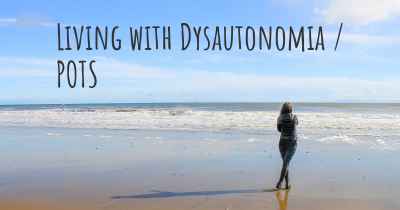Is it advisable to do exercise when affected by Dysautonomia / POTS? Which activities would you suggest and how intense should they be?
See if it is advisable for people with Dysautonomia / POTS to practice sports and which ones are the most recommended if you have Dysautonomia / POTS
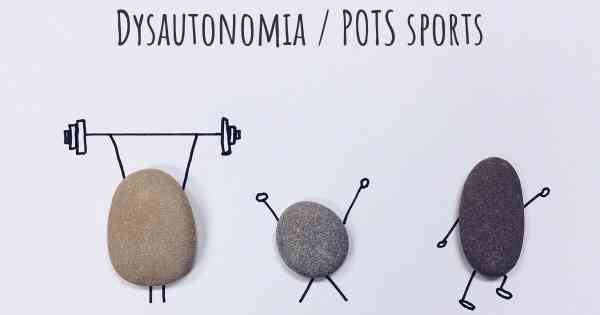
Dysautonomia refers to a group of conditions that affect the autonomic nervous system, which controls involuntary bodily functions such as heart rate, blood pressure, and digestion. One specific type of dysautonomia is Postural Orthostatic Tachycardia Syndrome (POTS), characterized by an abnormal increase in heart rate upon standing up. People with POTS often experience symptoms such as dizziness, lightheadedness, fatigue, and exercise intolerance.
While it may seem counterintuitive, exercise can actually be beneficial for individuals with Dysautonomia/POTS. Engaging in regular physical activity can help improve cardiovascular fitness, increase blood volume, and enhance overall well-being. However, it is crucial to approach exercise with caution and follow a tailored program that takes into account individual limitations and symptoms.
Low-impact aerobic exercises are generally recommended for individuals with Dysautonomia/POTS. These activities help improve cardiovascular health without placing excessive stress on the body. Some suitable exercises include:
- Walking: Start with short walks and gradually increase the duration as tolerated. Consider using a heart rate monitor to ensure heart rate stays within a safe range.
- Swimming: Water provides buoyancy, reducing the impact on joints. Swimming or water aerobics can be excellent options for individuals with POTS.
- Cycling: Stationary or recumbent biking is a low-impact exercise that can be easily modified to suit individual fitness levels.
- Elliptical training: This exercise machine offers a low-impact cardiovascular workout while engaging multiple muscle groups.
It is important to note that the intensity of exercise should be gradually increased over time. Starting with shorter durations and lower intensities allows the body to adapt and minimize the risk of symptom exacerbation. A heart rate monitor can be a valuable tool to ensure heart rate stays within a safe range during exercise.
Interval training can be particularly beneficial for individuals with POTS. This involves alternating periods of higher intensity exercise with periods of rest or lower intensity activity. For example, a person may walk for 2 minutes, then rest for 1 minute, and repeat this cycle for a total of 20 minutes. Interval training helps improve cardiovascular fitness while allowing for adequate recovery.
In addition to aerobic exercise, strength training can also be incorporated into the exercise routine. However, it is essential to use light weights and focus on proper form to avoid straining the body. Strength training exercises should target major muscle groups and be performed with controlled movements.
Flexibility exercises such as stretching and yoga can help improve joint mobility and reduce muscle tension. These activities should be performed gently and without pushing beyond comfortable limits.
It is crucial for individuals with Dysautonomia/POTS to listen to their bodies and pace themselves. Overexertion can lead to symptom flare-ups and setbacks. It is recommended to start with shorter exercise sessions and gradually increase duration and intensity as tolerated.
Hydration is another vital aspect to consider. Individuals with POTS often have difficulties regulating fluid balance, so it is important to drink plenty of water before, during, and after exercise to prevent dehydration.
Before starting any exercise program, it is advisable to consult with a healthcare professional familiar with Dysautonomia/POTS. They can provide personalized recommendations and guidance based on individual symptoms and medical history.
In conclusion, exercise can be beneficial for individuals with Dysautonomia/POTS, but it should be approached with caution and tailored to individual capabilities. Low-impact aerobic exercises, interval training, strength training, and flexibility exercises are all suitable options. Gradually increasing intensity, listening to the body, and staying hydrated are key factors in managing symptoms and optimizing the benefits of exercise.
Posted Apr 19, 2017 by Nikki 2192
Posted Apr 27, 2017 by SaraW13 1050
Posted Apr 27, 2017 by Melissa 1100
Posted Aug 17, 2017 by Miranda 2150
Posted Sep 27, 2017 by Lbond94 4100
Thats the polite, medical answer.... The stark reality is SOME of us POTSies CANT get out and excercise daily because it is more dangerous to do so than not - a fall could break something, the energy levels required to stand up alone are more than some of us have and our heart rates, chest pains, BPs, and the dizziness just wont take it.
So - my advice is as most will have been told - keep your feet and legs moving even if you are still laying in bed - rolling the ankles - raising the legs a little if you can etc.....
If you can - get a yoga band or two and use those to stretch your arms and legs and keep things moving up and down and if you can lay on your side - then side ways as well depending on what else you have going on with hips and back etc..... stretch your arms out etc and back muscles ...
IF you can - light excersise - walking - even if its using a walking frame, swimming or walking in a swimming pool, some POTS patients can run, jog, go cross country, do weights, play sports like football, netball, basketball etc - personally - I would die if I attempted ANY of that. .... Stick to what your body allows and push it a little every now and then to see what you can handle but be prepared to be totally exhausted for days afterwards and incapacitated depending on the severity of your POTS.... again - doctors and physios recommendations for YOUR situation.
Posted Dec 3, 2018 by Shell 800
Posted May 30, 2017 by Valkiria 650
Posted Jun 2, 2017 by Aurora Saez 3201
Posted Sep 10, 2017 by Annie 2050
Posted Nov 8, 2017 by Katerine 700
